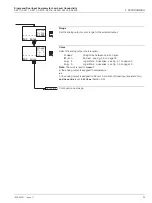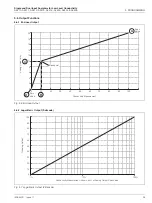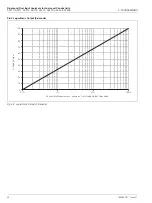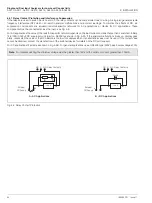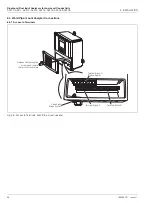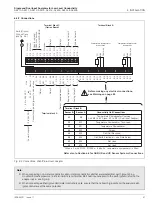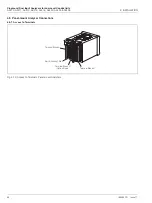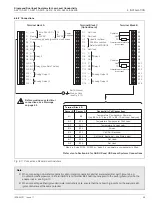
Single and Dual Input Analyzers for Low Level Conductivity
AX410, AX411, AX413, AX416, AX418, AX450, AX455 & AX456
5 PROGRAMMING
IM/AX4CO Issue 11
45
Pulse Frequency Ouput
The pulse frequency output is the number of relay pulses per minute required for 100%
control output. The Pulse Frequency Output is interrelated to the chemical reagent
strength and the solution flow rate. The chemical reagent flowrate and pulse frequency
is adjusted experimentally to ensure that the chemical reagent is adequate to control
the dosing under maximum loading. Adjust the Pulse Frequency Output in Manual
Mode and set to 100% valve output before setting up the PID parameters.
For example, if the observed value on the display is 6 and the control point is 5 then the
frequency needs to be increased.
The actual number of pulses per minute is calculated using the following equation:
Actual pulses per minute =
Set the pulse frequency between 1 and 120 pulses per minute in 1 pulse per minute
increments.
Control
Output
Pulse Frequency Output/Minute
1
10
50
120
0
0
0
0
0
25
0.25
2.5
12.5
30
50
0.50
5.0
25
60
75
0.75
7.5
37.5
90
100
1.00
10.0
50
120
Note.
If the pulse frequency of 120 is reached then concentration of the reagent needs
to be increased.
Note.
Changes to the pulse frequency do not take effect until the start of a new cycle.
See Section 5.8.2.
See Section 5.9.
Pulses/Minute
60
Output Type
set to
Pulse
Power Recovery
PID Controller
CONFIG. SECURITY
% control output x pulse frequency output
100
Energized
Output = 50%
De-energized
Energized
De-energized
Examples. Pulse Frequency =
50 pulses per minute (1 pulse every 1.25s)
Permanently de-energized
Output = 0%
Output = 100%
0.3s
0.9s
0.3s
0.9s
2.1s
0.3s





